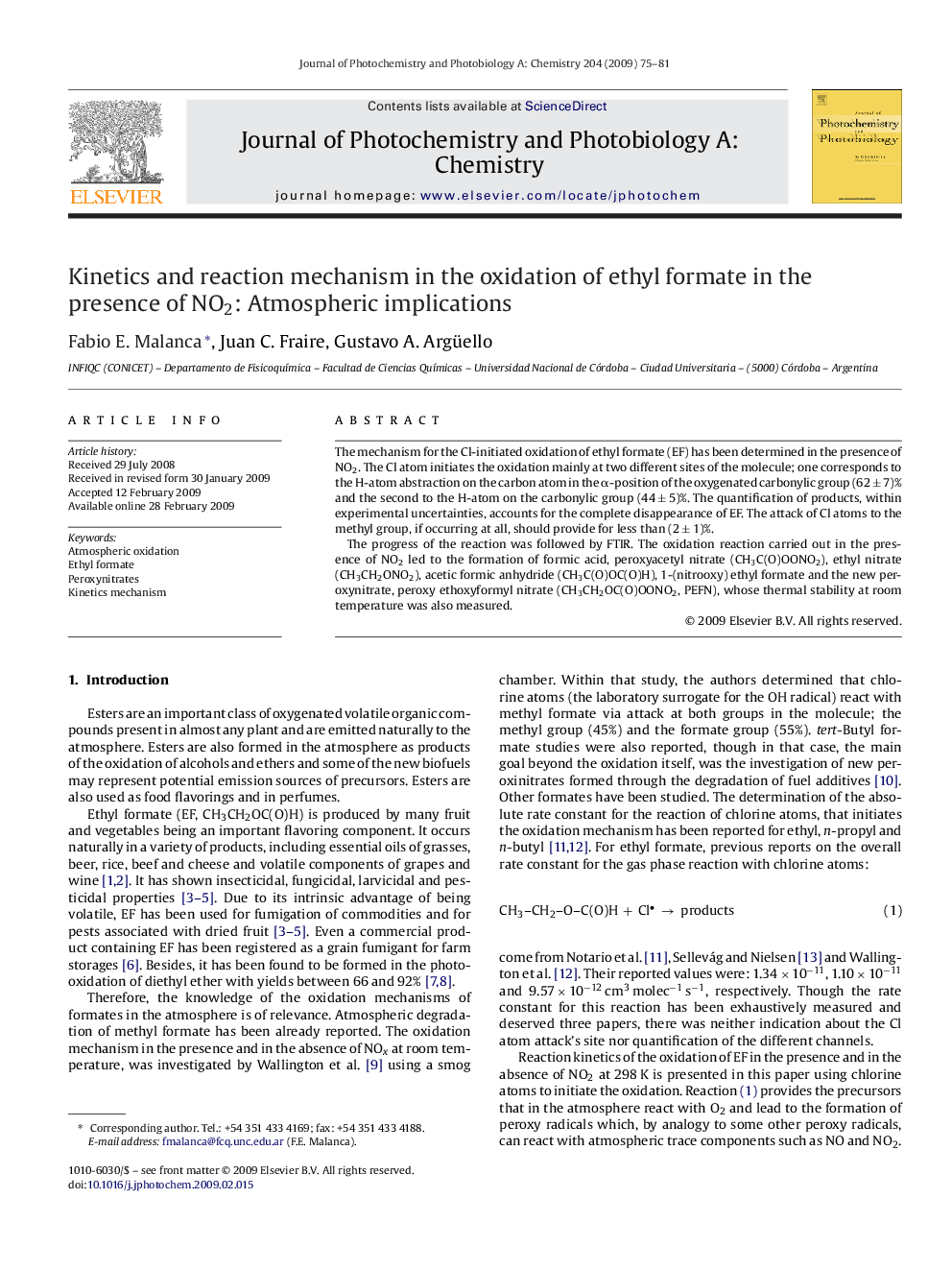| Article ID | Journal | Published Year | Pages | File Type |
|---|---|---|---|---|
| 27974 | Journal of Photochemistry and Photobiology A: Chemistry | 2009 | 7 Pages |
The mechanism for the Cl-initiated oxidation of ethyl formate (EF) has been determined in the presence of NO2. The Cl atom initiates the oxidation mainly at two different sites of the molecule; one corresponds to the H-atom abstraction on the carbon atom in the α-position of the oxygenated carbonylic group (62 ± 7)% and the second to the H-atom on the carbonylic group (44 ± 5)%. The quantification of products, within experimental uncertainties, accounts for the complete disappearance of EF. The attack of Cl atoms to the methyl group, if occurring at all, should provide for less than (2 ± 1)%.The progress of the reaction was followed by FTIR. The oxidation reaction carried out in the presence of NO2 led to the formation of formic acid, peroxyacetyl nitrate (CH3C(O)OONO2), ethyl nitrate (CH3CH2ONO2), acetic formic anhydride (CH3C(O)OC(O)H), 1-(nitrooxy) ethyl formate and the new peroxynitrate, peroxy ethoxyformyl nitrate (CH3CH2OC(O)OONO2, PEFN), whose thermal stability at room temperature was also measured.
